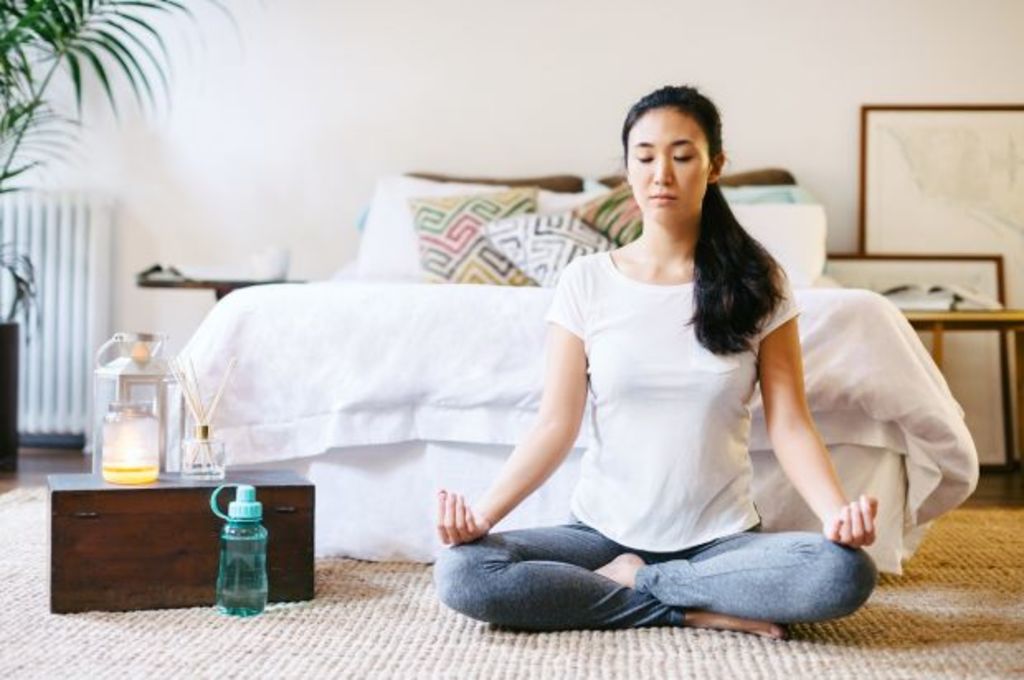Craft corners, yoga rooms: How the self-care craze has seeped into home design

Picture an escape.
The first image that came to mind was probably a sandy beach, or an exotic location. It likely wasn’t your master bathroom or bedroom.
That is slowly changing, said interior designer and author Nate Berkus.
“With everything going on in the world, I think all of us want, and have always wanted, our home to be our sanctuary,” said Berkus.
Berkus has made a career of transforming peoples’ living spaces into private oases. But as millennials join the ranks of home buyers, with their obsessive interest in self-care, mindfulness and the Internet, the idea of design as escapism is expanding.
People are relying more on their home environments to boost their moods and overall sense of well-being. And in today’s heated climate, optimising your home for happiness and creating a safe space to decompress and disconnect from work, politics and technology are not only valued but seemingly necessary.
“The best interiors are the interiors where people…shut out all of the noise and really take a great, careful assessment of what made them feel the best in their spaces,” Berkus said. “The first question everyone should ask themselves before launching any design project whatsoever is, ‘What makes you feel good in your home?’ “
With minimalism in vogue and decluttering advocates such as Marie Kondo reaching Beyonce-esque levels of recognition, the areas of home and wellness are becoming more integrally intertwined. People are shying away from clutter and excess by placing more weight on the long-term benefits of the objects they choose to keep and display in their homes.
- Related: Radio to renovation: Ben Fordham’s double life
- Related: Madeleine West’s character-filled South Yarra home
- Related: The ‘cheap’ dwellings making a big comeback
“As a culture, I think we have too many things. I think there is a fine line drawn between hoarding, which is truly a medical term, and collecting,” Berkus said. “It’s important not to have too many, because then you stop noticing, engaging and caring about the details…That’s when you cross the line from collector into something more dangerous.”
One way Berkus avoids this pitfall is by selecting furnishings that have “age and patina” and “evoke a sense of history, permanence and use.” For example, displaying treasured travel souvenirs or incorporating beloved vintage and antique furniture might fit the bill.
“When you’re embarking on a renovation or redesign, ask yourself, ‘What choices can I make to promote a feeling of sanctity?’ ” Berkus said. He also recommends incorporating “natural elements,” “timeworn finishes” and “architectural elements salvaged from old buildings” to add layers of depth and character.
Many of his clients are devoting spaces in their homes to “wellness, tranquility and serenity.” His celebrity patrons, including his friend Oprah Winfrey, often request spaces for silence and reflection such as craft corners, reading nooks, and yoga, prayer and meditation rooms.
Master bathrooms have also become a common place of respite, with trends toward personalisation and spa-inspired amenities. “Bathrooms have become even more sumptuous,” Berkus said.
For homeowners on a budget, an easy way to carve out a slice of bathroom serenity is with candles, fresh flowers, relaxing music and recessed lighting. Berkus also notes a growing trend toward upholstered bathroom furniture such as small, quilted chaises and tufted settees next to the bathtub, to add another tier of warmth and relaxation.
The idea of optimising home wellness has also seeped into our travel and lifestyle choices. “Ten years ago, hotel design wasn’t at the forefront of everyone’s consciousness. It didn’t really matter as much as it does today,” Berkus said. But now, “when you’re looking online and booking a vacation, [you ask] ‘What’s the design of the bathroom in the room that I’m staying in? Where is the photo of the spa or the pool?'”
Visual social networks such as Instagram and Pinterest can help homeowners curate their interests, hone their design aesthetic and create a home environment that reflects their personality and tastes, Berkus said.
“The design consciousness of everybody has been elevated based on our access to information,” Berkus said. “People are literally planning not only their homes and their living rooms [on these sites] but their weddings and next meals.”
They have also served as great visual tools to help clients communicate to interior designers what statement and sentiment they want their decor to exude, “whether it’s something that reflects who they are as a person, their cultural heritage or…a [certain] time in their lives that was meaningful to them.”
The flip side of these websites is that no one really understands what design features cost. “Clients will say, ‘We really love this marble bathtub carved out of a solid block of marble. And I tell them: ‘I love that as well. Are you aware that it is the same price as an Acura?’ ” he said with a laugh.
Your best shot at creating a home that feels “safe, warm and protected,” Berkus said, is to do your homework and figure out what design style best suits you before pulling out your credit card.
“We all do better when our homes are better. Our homes do rise up to greet us, and they do make a difference in how we move through the world,” Berkus said. “At the end of the day, when we come home and we light that candle and we close the door, we want to know that we are surrounded by things that we have chosen and that we really love.”
– The Washington Post
We recommend
We thought you might like
States
Capital Cities
Capital Cities - Rentals
Popular Areas
Allhomes
More







